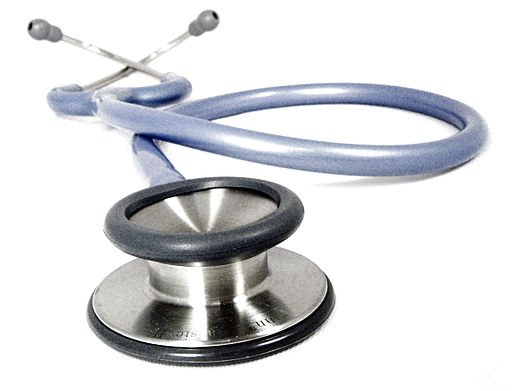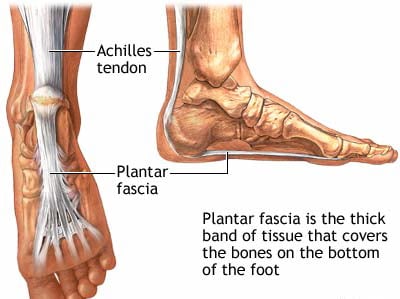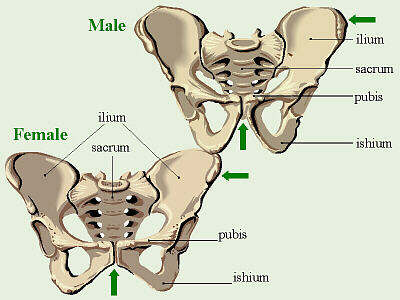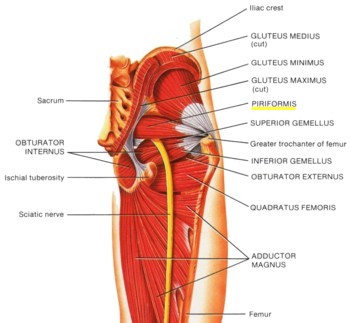Provide Yourself with Free Healthcare - Simple Exercises for Pain Relief

Provide more relief from your own discomfort
We all need some relief now and then from allergy or cold-related blocked sinuses, sore feet, a charlie horse, sciatica causing hip pain and pain down the leg, and brain freeze after eating something cold too quickly.
Some of us also need relief from slight urinary incontinence and poor pelvic muscle performance. The easy and free methods for helping these common health problems are very simple to do by yourself.
Blocked sinuses are especially bad for some of us

Give yourself relief from blocked sinuses
(This one helps me in the fall, when the leaf mold grows.)
Decongestants make most of us sleepy or, at the least, a little spacey. Use this method to clear your sinuses.
It takes effect before the decongestant could even reach your nose. (Note that this doesn't work 100% of the time, but it works for the vast majority of people.)
Press your tongue to the roof of your mouth. Remember to keep it there until you've completed this exercise.
Exhale and pinch your nose closed.
Keeping your tongue pressed to the roof of your mouth and your nose pinched closed, move your head up and down as if you were shaking your head "yes", not frantically, but in big, steady, up and down movements.
Hold your breath until you feel the need (but not urgent, about-to-pass-out need) to breathe.
When you breathe, breathe only through your nose. Then exhale and pinch your nose closed again.
Pinch and repeat. (Get it? Shampoo? oh, well....)
Do this exercise for a minute or two.
Why does it work? It relaxes the muscles around the mouth and nose, and it dilates the blood vessels in the sinus area.

Stop brain freeze after eating ice cream
If you get a sudden headache - brain freeze - after eating ice cream or drinking something cold, this should put that hard aching in your forehead and temples to rest.
Press your tongue to the top of your mouth.
Keep it there until the headache stops.
That's all you need to do.
Why does it work? You're warming the top of your mouth with your tongue. When the top of your mouth gets too cold, it causes referred pain, which makes your head ache. Your tongue pressed against the top of your mouth warms it again and stops the referred pain.
A horse with an opinion about Charlie horses

Stop a Charlie horse in your calf or foot
(You don't have to press your tongue against the roof of your mouth for this one.)
This isn't for sports injuries, but for simple leg or foot cramps.
When you first feel a muscle in your calf start to contract, quickly straighten your leg and pull your heel down and your toes up. Don't bounce or snap your leg, just move it quickly.
If the charlie horse is in the arch of your foot, stretch your heel down and your toes out. If you feel it coming and are near a stair step, place the ball of your foot on the step and stretch your heel downward.
If you're near a wall, face the wall. Then push against it and back away enough that your legs are slanted away. Bend the leg for the foot that's not cramping, so you have good support. Stretch the cramping foot and leg backward, and place the ball of the foot on the floor. Then push the heel backward so the toes are spread on the floor and the whole foot is stretched back. (If this is confusing, watch the video below for sore heels. It's the same exercise.)
Hold the stretching position until the Charlie horse gives up or relaxes. It might still be uncomfortable, but it won't leave you with the feeling that you've just been punched in the leg or bottom of your foot.
If you're frequently having muscle cramping, your muscles are needing some help. You need to suspect a persistent loss of fluids, with some dehydration in your muscles, or loss of minerals. Both will directly affect your leg and foot muscles, which usually cramp the easiest of most muscles in these circumstances. You can try to reduce the frequency of Charlie horse cramping by increasing your water intake and taking a multi-mineral that contains both potassium and calcium.

Relieve sore heels and sore feet when they are caused by Plantar Fasciitis - a very common cause of foot pain
If you have a sore heels or sore feet, you could have a very common problem called Plantar Fasciitis. The name Plantar Fasciitis literally means "inflammation of the plantar". Plantar tissue is the thick band of connective tissue that is attached to the heel bone and spreads across the bottom of the foot. The pain is usually in the pad of the heel and, if it's not relieved, makes the whole foot miserable.
You can do several stretches and easy massage techniques to relieve this condition. I've included a few videos below that discuss exercises to relieve the tightness and resulting pain. My two favorite exercises are leaning against the wall and doing a heel drop. The main thing to remember is that you never bounce or force a stretch when you're doing plantar exercises..
Mainly, you want to stretch that plantar tissue, but not stress it. You will also want to reduce inflammation.
Too reduce inflammation, take any of the anti-inflammatory over-the-counter medications, such as aspirin, ibuprofen or naproxen (naproxen is Aleve - if you don't have Aleve, but have Midol, that works, too). (Generic store brands of these products work just as well, and are much cheaper than the name brands.) Tylenol is acetaminophen, which is not anti-inflammatory.
(A good non-medication tool for reducing inflammation: keep a bottle of frozen water in the freezer. Sit down a couple of times a day and roll it back and forth across the floor with the bottom of your foot, making sure to reach the pad of the heel and to roll the full length of the foot.)
Demo of how to relieve sore feet
Relieve sore feet when you're out in public
When I've been doing the exercises, but my feet begin to ache as I'm on my feet out in public, I find a staircase. Then, on the stairs, I do the heel stretch that Dr. Neuhaus demonstrates in his video by getting up on the step of his exam table and stretching his heels down. This is very good for giving a few extra hours of comfort during the day.
But, please DO NOT bounce when you stretch your heels down. Hold on to the handrail. Make sure the ball of your foot behind your toes is on the step. I only stretch one foot at a time. (It takes a little more time, but that's better than an accidental tumble down the steps.)
I stretch each foot for about a full minute. If you do that, you will feel the muscles down the back of your leg slowing giving up their tension, because your heel will slowly start sinking downward. Oh, and it feels so good when you've finished and can walk comfortably again!
If you don't have stairs where you work, do the wall exercise, which is also demonstrated.

Improve urinary retention, vaginal strength and penile control with Kegel exercises
As they age, men worry about loss of sexual performance. Women also need to keep cervical and vaginal muscles toned. Both sexes are concerned about maintaining or improving urinary control.
For men, the problem of urinary retention can occur after prostate surgery. For women, it can occur during or after pregnancy. For both sexes, the problem can progress with aging, and can be improved or eliminated with simple exercises.
Doing Kegel exercises, often just called "Kegels", tones up the pubococcygeus, or PC, muscles for both sexes, and when those are strong, both sexual performance and urinary control are much better. The PC muscle is like a big sling or hammock that is attached to the front of the pelvis at the pubis bone and the back at the base of the spine. If you look at the pelvis pictures to the right, you will see that this would mean that the PC muscle almost covers the bottom of the pelvis. It and accompanying muscles are often referred to as the pelvis floor.
Kegel exercises are very easy, and you can do them anywhere without anyone even knowing that you're doing them. If you're bored in a meeting, do your Kegel exercises. If you think a sermon or a lecture is dull, plant an attentive look on your face and do your Kegel exercises.
However, that's after you know how to do them. The first few times you do them, do them at home. First locate the PC muscle. When you urinate, shut off the flow of urine midstream a few times, then allow the urine to flow again. When you do that, you've just clenched the PC muscle.
You want to make sure when you're doing this exercise that you're indeed clenching this muscle alone - that your thigh, buttock or abdominal muscles aren't doing the work.
You can practice the first few times by urinating and cutting off the flow of urine until you're sure of how it feels when you're clenching the PC muscle. Doing Kegel exercise is exactly that same feeling - clenching and relaxing the PC muscle. Once you know how that muscle feels when you clench it, you can sit comfortably anywhere, and do the Kegel exercise to your heart's content.
Start by clenching for 5 seconds and relaxing for 5 seconds, in sets of 10. Then increase the clenching time to 10 seconds with a 5 second break between each set. Then work up until you can clench your PC muscles for up to 2 minutes without discomfort. You'll find that everything in that area works better.
Lower back pain may sneak up on you

Relieve lower back pain with easy stretches
If you have lower back pain, there are several methods you can use to help reduce it. (This is for a simple lower back ache, not for back injury.) The first thing you can do is develop the habit of standing and sitting up straight and tall. When you slouch, you add an extra 100 pounds of stress onto your lower back.
For lower back ache, this quick exercise should provide some immediate relief. Stand in front of the kitchen counter or sink (because it's usually the right height). Grip it and hunch your back, tucking in your abdomen as you curl your back. Hold that position for about 30 seconds, or enough time to feel your lower back relax. When women are in the last trimester of pregnancy, or when people in general are carrying more weight in their stomach, a low back ache is common.
Another helpful exercise for lower back pain:
Get down on your knees and sit back onto them.
Stretch your upper body and arms forward and down. Relax and let your back stretch.
This exercise is demonstrated toward the end of the first video on upper body stretches below.
Clear a frozen shoulder
(This is not for frozen shoulder that is the obvious result of injury.) This is a fairly common problem. One day you realize that you have developed shoulder pain that makes it difficult or impossible to lift your arm higher than your shoulder. This is called "frozen shoulder".
While several theories exist about what's happening, one cause of frozen shoulder that is not exercise-related is, oddly enough, simply slouching too much. This throws the neck forward so the head will remain level for good vision. This, in turn, pinches an important nerve against the base of the skull. This nerve controls the shoulder muscle. The video below demonstrates the problem very well, even if you don't understand all of the terminology.
One cause of a frozen shoulder - slouching!
You begin your own treatment by practicing good posture - not slouching - when both sitting and standing, for several days. This allows the nerve in your neck to return to normal position without being pinched. Then do the exercises below. You should see a very good improvement in your shoulder pain and flexibility in raising your shoulder above your head.
The lady in the video below demonstrates some frozen shoulder exercises to help free up a frozen shoulder.
Frozen shoulder exercises


Relieving Sciatica pain in the hip and pain down the leg, or tingling and numbness in the foot
Sciatica is pain in the buttock or down the leg, or tingling and numbness down the leg.
Sciatica can be caused by disc problems in the back, by injury, or by tightness in the piriformis muscle - a short muscle at the hip that goes part of the way across the hip- being too tight as it crosses over the top of the sciatic nerve, a major nerve that continues down the leg. The discomfort is also called piriformis syndrome.
If the sciatica is caused by a piriformis muscle that is too tight, you can do the exercises at home to stretch this muscle out and relieve the pressure on the sciatic nerve.
The following video provides exercises for stretching out the piriformis muscle so it's not clamping down on the sciatic nerve. It's also beneficial for the knees.
While the video is titled a yoga video, the exercises are easy floor exercises.








